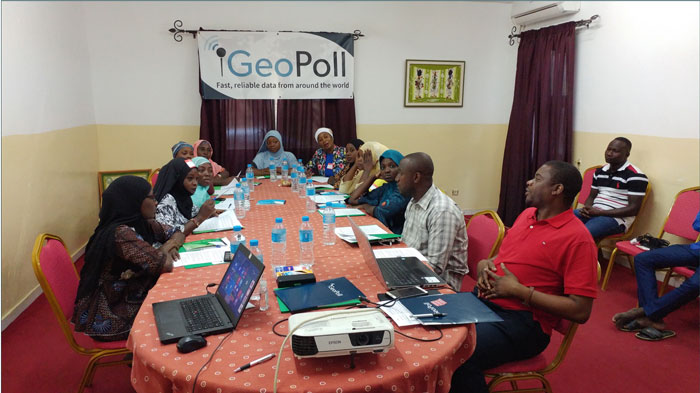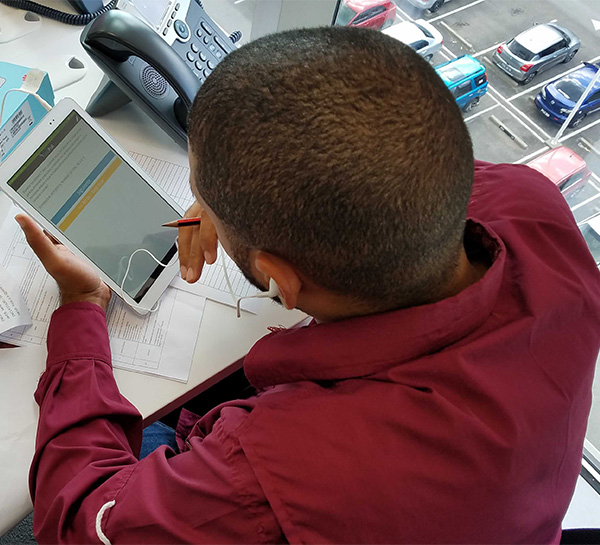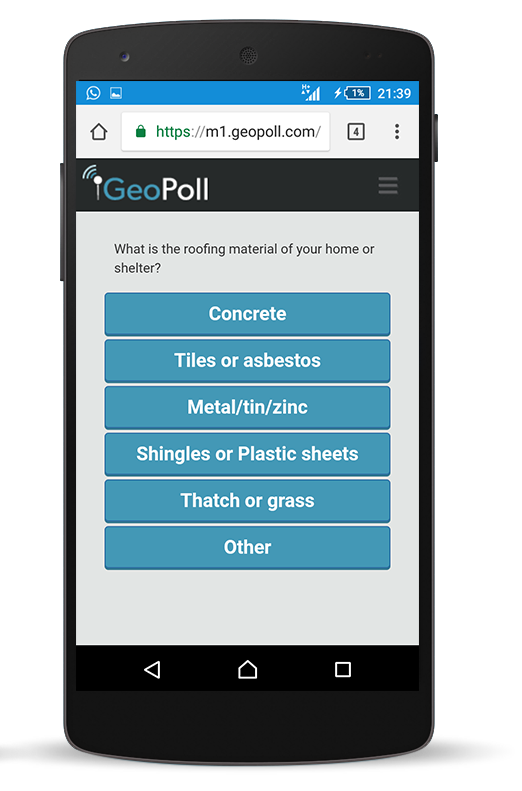- Contents
What are CAPI, CATI, and CAWI?
Three common research methodologies are CAPI, CATI, and CAWI, which stand for Computer Assisted Personal Interviewing, Computer Assisted Telephone Interviewing, and Computer Assisted Web Interviewing. While these three methods have similar names and are often mentioned together, in practice they are very different methods, and each has unique characteristics which should be taken into account when deciding on a data collection method. Below we outline the major differences of CATI, CAPI, and CAWI, along with pros and cons of each method.
Computer Assisted Personal Interviewing (CAPI)

Computer Assisted Personal Interviewing or CAPI is an in-person or face-to-face research method in which interviewers use software on a computer or tablet to record interview responses. CAPI is an interviewer-administered mode, meaning that interviewers can clarify questions that may be unclear to respondents and ask follow-ups. It is generally considered an improvement on older face-to-face interview methodologies, in which interviewers relied on pen and paper to read through a questionnaire and record responses, because it reduces the chance of interviewer error and enables more secure storage of data. CAPI surveys support nearly any question type, both qualitative and quantitative, and interviewers can use visual and audio aids.
Because CAPI is an in-person research mode, it can reach anyone, even populations who do not have internet or phone access, which makes it a good solution for gathering data from low-income populations. However, CAPI requires interviewers to be trained in survey administration and for them to travel to each household they will interview. In emerging regions and rural areas where houses can be dispersed over a large area, this can make administering CAPI surveys time-consuming.
Pros of Computer Assisted Personal Interviewing:
- Can reach any household or respondent, even those without internet or phone access
- Allows for interviewers to collect detailed data through follow-up questions and probing
- Improves on paper and pen survey administration by reducing the chance of interviewer error or data loss
Cons of Computer Assisted Personal Interviewing:
- Requires interviewers to be recruited and trained in survey administration
- Can be time-consuming for interviewers to travel from household to household, especially in rural areas
- Can be costly due to the need for trained interviewers and the length of time it takes to collect data
Computer Assisted Telephone Interviewing (CATI)

Computer Assisted Telephone Interviewing or CATI is a voice call interview method in which trained interviewers call respondents’ phone numbers, usually working from a central call center. CATI interviews are similar to CAPI interviews in that they are interviewer-administered, so interviewers can conduct similar probing and clarification of survey questions, and CATI software also allows interviewers to securely record responses and save data. CATI interviews support both qualitative and quantitative survey questions and can utilize audio aids as part of a questionnaire design.
 CATI surveys can only reach populations with access to a landline or mobile phone, which means the lowest-income populations may not be reachable through a CATI survey. However, CATI is generally faster to administer than CAPI surveys and slightly lower cost, as interviewers work from a central location rather than traveling to conduct surveys in person.
CATI surveys can only reach populations with access to a landline or mobile phone, which means the lowest-income populations may not be reachable through a CATI survey. However, CATI is generally faster to administer than CAPI surveys and slightly lower cost, as interviewers work from a central location rather than traveling to conduct surveys in person.
Pros of Computer Assisted Telephone Interviewing:
- Allows for interviewers to collect detailed data through follow-up questions and probing
- Securely stores data and enables simple survey administration through CATI software
- Reaches wide segments of the population without having to overcome logistical hurdles associated with in-person research
- Interviews can be administered at the respondent’s convenience by scheduling a call-back time
Cons of Computer Assisted Telephone Interviewing:
- Requires interviewers to be recruited and trained in survey administration
- May not reach the lowest-income populations who do not have access to a mobile phone or landline
Computer Assisted Web Interviewing (CAWI)
 Computer Assisted Web Interviewing or CAWI is another name for online surveys or interviews, which are surveys administered through a web browser or mobile application. Links for CAWI surveys can be sent through multiple methods, including email, mobile application notifications, online advertisements, and SMS messages. CAWI surveys support both closed-ended and open-ended survey questions, however may not provide as detailed qualitative data as an interviewer-administered mode such as CATI or CAPI.
Computer Assisted Web Interviewing or CAWI is another name for online surveys or interviews, which are surveys administered through a web browser or mobile application. Links for CAWI surveys can be sent through multiple methods, including email, mobile application notifications, online advertisements, and SMS messages. CAWI surveys support both closed-ended and open-ended survey questions, however may not provide as detailed qualitative data as an interviewer-administered mode such as CATI or CAPI.
CAWI surveys are useful for gathering quick insights from large sample sizes as they do not require interviewers to be trained and can be distributed very widely, but they are limited to populations who have internet access and are comfortable using computers or internet-enabled phones or tablets. CAWI surveys are also self-administered, meaning you rely on the respondent to fill in a survey accurately without the guidance of an interviewer, and that questionnaires generally need to be shorter for respondents to complete them.
Pros of Computer Assisted Web Interviewing
- Simple to set-up and administer to large sample sizes
- Do not require the hiring and training of interviewers
- Can be a fast and low-cost method of data collection
Cons of Computer Assisted Web Interviewing
- Only reach literate populations and those with access to the internet and a computer or mobile device
- Qualitative data collection can be more limited than with interviewer-administered modes
- Questionnaires should be shorter to encourage higher completion rates
Choosing between CAPI, CATI, and CAWI
As outlined above, there are significant differences between CAPI, CATI, and CAWI survey modes. Generally, if you are looking to get the most representative survey possible, CAPI and CATI are the best options, but CAWI can be useful for quickly gathering insights on a consumer population or in countries which have high levels of internet access. When choosing a research mode, you must take into account the population you are trying to reach, questionnaire length and complexity, budget, and timeline. Use GeoPoll’s interactive research mode picker to get a quick view of what modes may be feasible for the project you are working on.
Depending on the country you are looking to research in, some modes may be more feasible than others, and talking to a research expert can help you narrow down your mode options. In addition to the three research modes mentioned here, there are other options such as SMS and Interactive Voice Response (IVR) which some research firms, such as GeoPoll, offer in addition to CAPI, CATI, and CAWI.
To speak to the GeoPoll team about which research mode is right for you, please contact us today.
